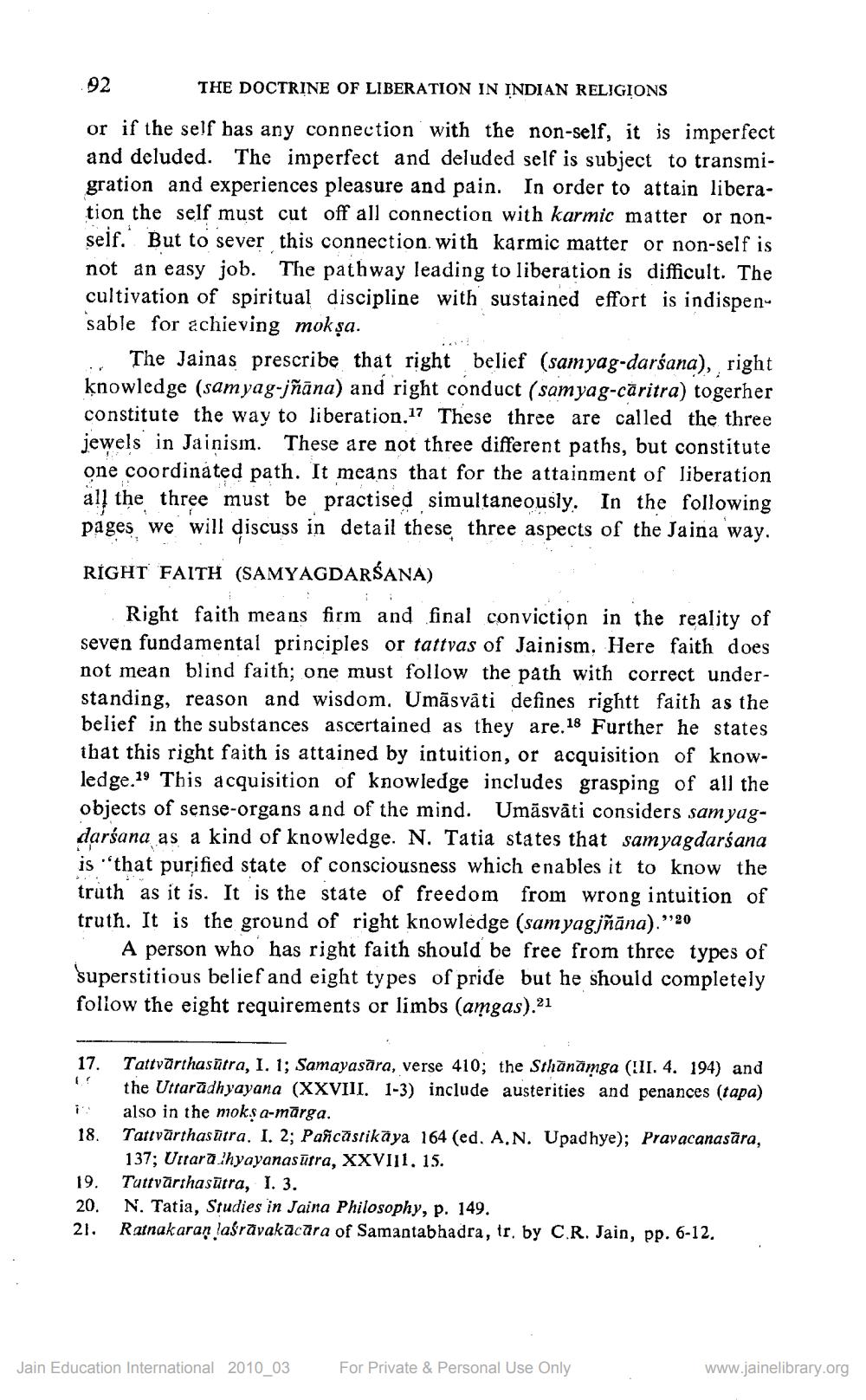________________
92
THE DOCTRINE OF LIBERATION IN INDIAN RELIGIONS
or if the self has any connection with the non-self, it is imperfect and deluded. The imperfect and deluded self is subject to transmigration and experiences pleasure and pain. In order to attain liberation the self must cut off all connection with karmic matter or nonself. But to sever this connection with karmic matter or non-self is not an easy job. The pathway leading to liberation is difficult. The cultivation of spiritual discipline with sustained effort is indispensable for achieving mokşa. .. The Jainas prescribe that right belief (samyag-darśana), right knowledge (samyag-jñāna) and right conduct (samyag-căritra) togerher constitute the way to liberation.17 These three are called the three jewels in Jainism. These are not three different paths, but constitute one coordinated path. It means that for the attainment of liberation all the three must be practised simultaneously. In the following pages we will discuss in detail these three aspects of the Jaina way. RIGHT FAITH (SAMYAGDARSANA)
Right faith means firm and final conviction in the reality of seven fundamental principles or tattvas of Jainism. Here faith does not mean blind faith; one must follow the path with correct understanding, reason and wisdom. Umāsvāti defines rightt faith as the belief in the substances ascertained as they are.18 Further he states that this right faith is attained by intuition, or acquisition of knowledge.19 This acquisition of knowledge includes grasping of all the objects of sense-organs and of the mind. Umāsvāti considers samyagdarśana as a kind of knowledge. N. Tatia states that samyagdarśana is that purified state of consciousness which enables it to know the truth as it is. It is the state of freedom from wrong intuition of truth. It is the ground of right knowledge (samyagjñāna).”20
A person who has right faith should be free from three types of superstitious belief and eight types of pride but he should completely follow the eight requirements or limbs (amgas).21
17.
18.
Tattvārthasütra, I. 1; Samayasära, verse 410; the Sthānāmga (!II. 4. 194) and the Uttarādhyayana (XXVIII. 1-3) include austerities and penances (tapa) also in the mokşa-mārga. Tattvārthasūtra. I. 2; Pañcāstikāya 164 (ed. A.N. Upadhye); Pravacanasāra, 137; Uttara Shyayanasūtra, XXVIII. 15. Tuttvārthasūtra, I. 3. N. Tatia, Studies in Jaina Philosophy, p. 149. Ratnakaran laśrāvakācāra of Samantabhadra, tr. by CR. Jain, pp. 6-12.
19. 20. 21.
Jain Education International 2010_03
For Private & Personal Use Only
www.jainelibrary.org




